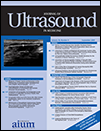Sonographically Guided Percutaneous Needle Tenotomy for the Treatment of Chronic Tendinosis
Abstract
Objective. Initial reports have shown percutaneous sonographically guided needle tenotomy without corticosteroid injection to be effective for the treatment of tennis elbow. The purpose of this study was to determine the effectiveness of this procedure with various tendons throughout the body. Methods. Fourteen tendons in 13 patients were identified as having a greater than 6-month history of clinical presentation consistent with tendinopathy that had failed treatment with physical therapy. All patients were treated with sonographically guided percutaneous tenotomy using a 22-gauge needle and a local anesthetic. A visual analog scale (VAS) pain score measurement was obtained before the procedure and at 4- and 12-week follow-up appointments. All complications were recorded. Results. The 14 tendons in this study included patellar (5), Achilles (4), proximal gluteus medius (1), proximal iliotibial tract (1), proximal hamstring (1), common extensor elbow (1), and proximal rectus femoris (1). The composite VAS score was significantly lower at both 4 weeks (mean ± SEM, 2.4 ± 0.7) and 12 weeks (2.2 ± 0.7) compared with the baseline (5.8 ± 0.6; P < .001). No complications or morbidity occurred. Conclusions. Sonographically guided percutaneous tenotomy of tendinosis was effective in improving patient symptoms without complications. Further investigation with additional patients and comparisons to alternative treatments is needed to validate these preliminary results.




